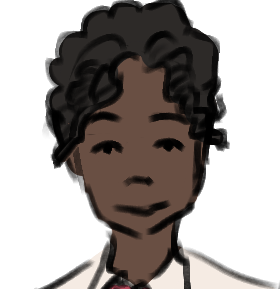NEW Story: Cocktail
Towers in the Park

Merce was one of seven sisters but she didn’t know it. Like many Vekllei people in young adulthood, her parents were born overseas, and so her Spanish heritage was somewhat obscured.
Growing up in postwar Vekllei, you develop an unusual esprit de corps which supersedes almost everything about you — a civic mission to establish a place in the world regardless of your prior circumstance or heritage. This well-intentioned internationalism cut both ways; you were not much judged about where you came from, but you also did not talk much about where you came from.
It did not help that many immigrants in Vekllei were not particularly sentimental about where they came from — they were often outcasts or persecuted back home, and so only treacly childhood nostalgia survived integration. Foods, styles of dress, religious traditions and folk songs were all Merce knew of Spain — the actual lived memory of her father were mostly suppressed. This is how a whole other marriage and six sisters fade away. Stories like these are very common in Vekllei today.
Merce worked as a constable in the Pharos neighbourhood of Uclo. Uclo is a big place full of migrants, so she mostly patrolled where she lived in East Uclo, which neighboured Copetpek. These were pleasant, poor boroughs of the Capital lighted by all corners of the world. They are also strikingly diverse in landscape — West Uclo is mostly pre-war, filled with low-rise Junta-era row houses and coffee shops. East Uclo contains some of Vekllei’s rare “towers in the park” — vertical neighbourhoods in the sky.
The Uclo Experimental Social Housing Project, called The Towers by its residents, are the result of direct intervention by the Vekllei Housing Commission. Most homes are built by municipalities with municipal-sized budgets, since they best know their neighbourhoods, but the catastrophic housing shortages of the early postwar years demanded national intervention. The Towers were built between 2022 and 2024 by innovative British contractors under the recovery lend-lease, and still dominate the landscape today. The six tower blocks are surrounded by gardens, and are closely linked to shops and transport on their periphery to other parts of the city. The VNR Metro has a station directly beneath them.
The Towers are unlike other examples of utopian ‘radiant cities’ because they do not function like other high-rise blocks. Distinctive in their architecture are ways to provide their inhabitants with control over their homes and corridors through great streets in the sky, full of light wells and sunlight. The spaces between apartments are used and cherished, and are extensions of living space for residents Instead of narrow, anonymous corridors and sterile lobbies, the Towers have libraries and food gardens.
This ‘defensible space,’ so-called, is not an initiative of municipal benevolence but in fact a foundational aspect of Newda. Home ownership is an essential feature to the Vekllei way of life, and so apartments are designed in ways that encourage residents to retain social and physical control over their residences and shared spaces — corridors are spacious and communal in the Towers, and crime rates have remained low decades after their construction.
The Towers today are highly desirable but largely filled with owner-occupiers unwilling to vacate. They are also a kind of post-war architecture that is now exceedingly rare in Vekllei. The Housing Commission now prefers mid-rise housing from which you can view the street, and considers more carefully the density of new construction. The success of The Towers was not enough — municipal architects are continuously experimenting with new ways of building homes for the country.
This suits Merce just fine, since she hates waiting for the bloody lifts anyway.
